Red sticky rice- Xôi Gấc- An Essence of Vietnamese Tet
Foreign travelers visiting Vietnam during Tet—the Vietnamese New Year—often find themselves intrigued by the special foods enjoyed during the celebrations. One such dish stands out: “xoi gac,” a unique red sticky rice that is distinctively Vietnamese. Its vibrant red color sets it apart, making it a visually captivating dish that can only be experienced here in Vietnam.
What is “Gac” and how is “xoi gac” made?
“Gac” (Momordica cochinchinensis) is a tropical fruit native to Southeast Asia, commonly referred to as “baby jackfruit” or “sweet gourd.” When ripe, its skin turns a dark orange, covered in small spines, while the inside reveals clusters of bright red pulpy flesh and seeds. Traditionally, it has been used for both culinary and medicinal purposes in Vietnam.
 Photo @zingnews.vn
Photo @zingnews.vn
Anyone who reads nutrition labels will appreciate “gac” for its remarkably high concentration of beta-carotene, surpassing that of other fruits and vegetables. Rich in antioxidants and nutrients, “gac” is considered a natural remedy for skin health and vision improvement.
The bright red hue and fragrant flavor of “xoi gac” stem from the red coating of its seeds.
The Making of "Xoi Gac"
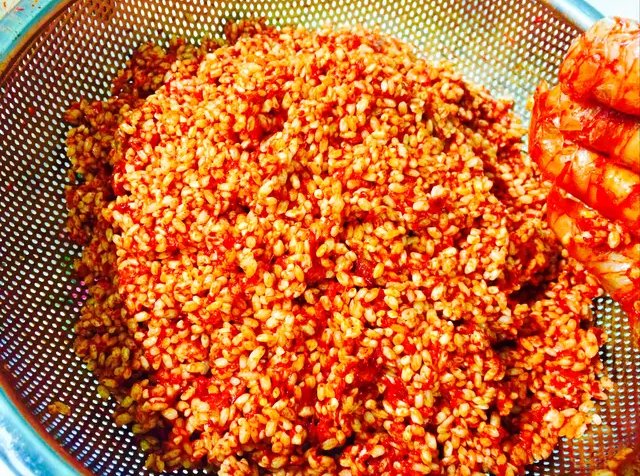 Photo @cookpad.com
Photo @cookpad.com
Watching the preparation of “xoi gac” can be a fascinating experience, seemingly chilling due to its vivid red color reminiscent of blood; however, there is nothing morbid about it. The seeds of “gac” are scooped out, mixed, and mashed with glutinous rice that has been thoroughly soaked in water. Once salt is added, the mixture is steamed to perfection. At the end of the cooking process, a touch of coconut milk and sugar is mixed in to create the deliciously sweet sticky rice. Mold can be used to shape the “xoi gac,” often topped with sesame and coconut for added appeal.
“Xoi gac” and Vietnamese Tradition
The significance of “xoi gac” in Vietnamese culture is profound, being present at weddings, during the Lunar New Year, and in various important rituals. This tradition stems from ancient Vietnamese folk beliefs, which celebrate a matriarchal heritage. As an agricultural society, the Vietnamese historically revered Mother Nature and the deities influencing natural phenomena essential for their survival and harvests, associating these with a peaceful existence. The color red, prominently featured in “xoi gac,” symbolizes luck and happiness across Vietnamese culture.
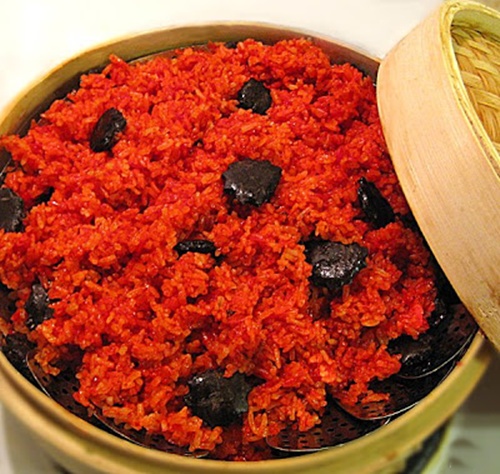 Photo @24h.com.vn
Photo @24h.com.vn
Rice is a staple in Vietnamese cuisine, which explains its critical role in religious ceremonies as an offering to the spiritual realm. Furthermore, red signifies good fortune and joy, making it a common sight in celebratory occasions such as weddings and the Tet holiday. Hence, “xoi gac,” a harmonious blend of rice and the color red, is a natural choice for traditional celebrations.
Nowadays, “xoi gac” can be enjoyed not just during special occasions, but is also a popular breakfast item available throughout the day. Its sweet flavor pairs wonderfully with savory accompaniments like “ruoc” (stringy salted dried pork), “gio lua” (Vietnamese pork sausage), or chicken.
Read More:
Other types of Xoi: Five-colored sticky rice, Xoi Vo
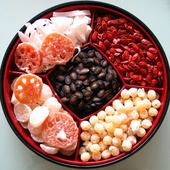
Vietnam's Most Common Seeds & Nuts For New Year
During Tet, every family in Vietnam prepares a special tray of snack to offer guests, containing a variety candies, biscuits, jam, fruits; and roasted nuts are indispensable components off the tray.
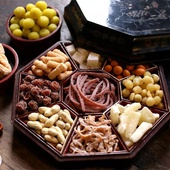
Essenstial Vietnamese New Year's Food
Vietnamese people have a very good habit of saving, which are reflected by the regular meals – rice with a main dishes (meat or fish/shrimp), a vegetable food and a bowl of soup.
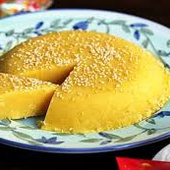
Mung Bean Pudding - Vietnamese Che Kho
To many Hanoian generations, mung bean pudding has become a familiar dish which always presents on the ancestors’ altar at New Year’s Eve.











